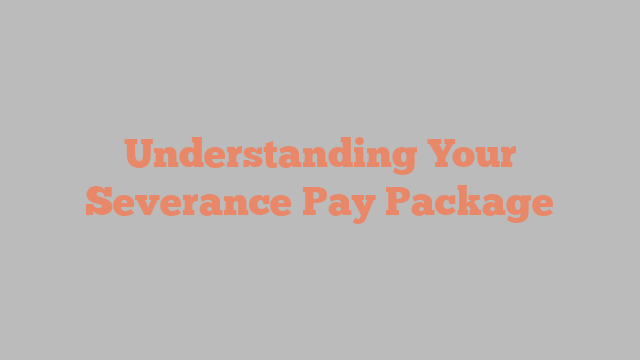Severance Pay Package
Depending on the company, industry standards and policy, as well as the employee’s financial needs and employment status, severance pay can vary widely. But understanding your severance package can help you make more informed decisions, both during and after your job transition.
Severance packages can include not only the lump sum of your final paycheck but also ongoing health insurance, career consultation services (also known as “outplacement”), company perks such as employee discounts and payout for unused vacation and sick time, and even the option to keep work-related items such as cell phones or computers. In addition to the total value of your severance package, you may also be able to negotiate certain terms of your exit package. Using this severance pay calculator, you can determine the value of your severance package and negotiate more effective with your employer.
The exact amount of severance pay an employee receives is usually stated in their employment contract or other written documents. But, in general, severance pay is calculated as one to two weeks of pay for every year worked at the company, with higher-level employees receiving greater amounts than lower-level employees. For example, an executive with five years of service might be paid severance pay of up to $7,500.

Understanding Your Severance Pay Package
While companies are not legally required to provide severance pay, they often do so as a way of maintaining morale and fostering positive relationships during difficult workforce transitions, such as layoffs. It also helps the company maintain a good reputation as a caring and responsible business in the event of a layoff.
According to an attorney who specializes in employment law, severance packages are typically based on tenure and the employee’s level within the company. For example, a senior manager or an executive with more than 20 years of service might be offered four weeks of pay per year of service. On the other hand, a front-line worker with only 10 years of service might be given three months of severance pay calculator.
In addition to the actual monetary value of the severance package, it is important to remember that your severance pay is taxable. Employers typically withhold federal and state income taxes, as well as Social Security and Medicare, just like they would on a regular paycheck. If your severance pay is being paid in a lump sum, it could push you into a higher tax bracket and increase the amount of taxes you’ll owe come filing time.
Whether or not you accept your severance package will also depend on how it impacts your ability to collect unemployment benefits in your new location. Some states have laws that require you to accept severance pay in order to qualify for unemployment benefits. Others have no such requirements and you can decide for yourself whether or not it’s worth accepting the offer.
Ultimately, the decision to accept your severance package is a personal one that requires careful consideration. Before you agree to anything, take the time to understand the value of your severance package, negotiate effectively with your employer, and plan ahead for your future by speaking with a Northwestern Mutual financial advisor.
